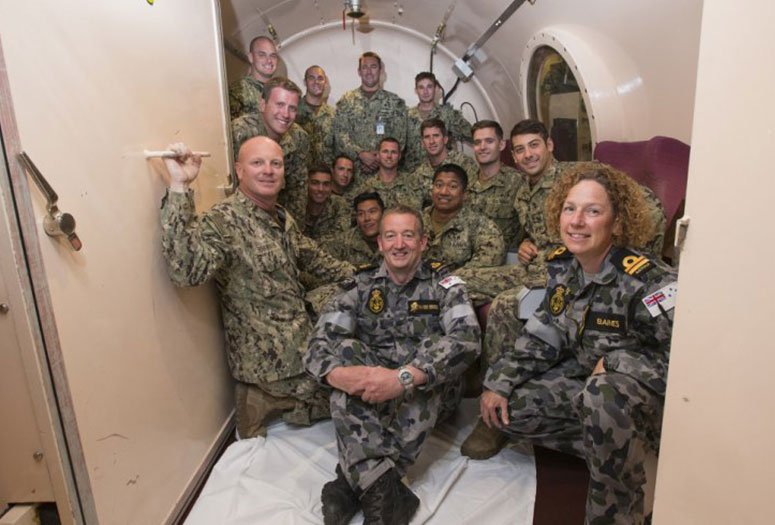

No one in the Navy diving community takes to the water without being confident as to their next breath. Effective gas regulation and the ability to regulate pressure so as to dive and surface safely is of paramount importance, irrespective of it taking place during training, on exercise or on deployment.
Australian and United States personnel involved in Exercise DUGONG 15, the multinational mine warfare and clearance diving training activity being held in Hobart between 5-16 October, have been working closely to ensure that the importance of diver health and safety is constantly reinforced.
Members of Australian Naval Reserve Dive Team 10 and the United States Navy Explosive Ordnance Disposal Mobile Unit 5, as well as the USN Mobile Diving and Salvage Unit One, visited the Royal Hobart Hospital’s Department of Diving and Hyperbaric Medicine to inspect the hyperbaric chamber, ready for use if required during DUGONG 15. Specialist staff within the Department include a number of key members of the Australian Naval Reserve, including Chief Petty Officer Clearance Divers Karl Price and Corry Van Den Broek, and Navy Nurse, Lieutenant Carol Baines, who combine their professional clinical roles with their work as reserve members.
Lieutenant Baines, a clinical nurse in the facility lead the tour for the visiting service members.
“The chamber is critical in supporting both military and civilian divers in the recompression of divers with dysbaric illness,” she said.
‘‘We treat between 25 and 30 divers a year, and to date, we have not had to treat any Navy divers, and we hope this continues to be the case.”
The chamber is unique, as it can treat divers as well as providing support in the treatment of a number of other areas of hospital care including Infectious diseases, endocrinology and vascular surgery.
“We treat nearly 2000 civilian patients in these medical areas in the chamber every year,” she said.
Lieutenant Scott Kendrick of the United States Navy was highly impressed by the facility and the professionalism of its staff.
“It’s a great chamber and we are confident that, if required, it will provide for the needs of our divers,” he said.
“Australian and United States Divers work so closely together and the knowledge that we can support each other in a medical emergency is incredibly reassuring.”
